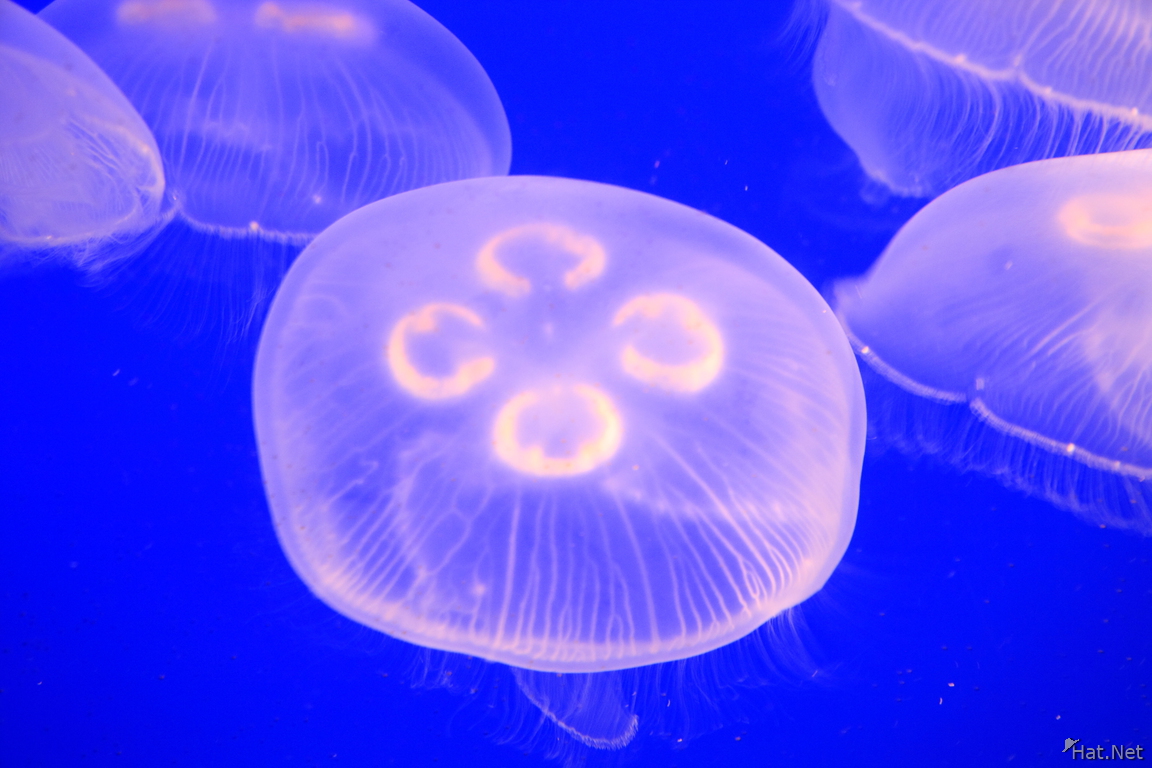moon jelly adult, aquarium
A. aurita and other Aurelia species feed on plankton that includes organisms such as mollusks, crustaceans, tunicate larvae, rotifers, young polychaetes, protozoans, diatoms, eggs, fish eggs, and other small organisms. Occasionally, they are also seen feeding on gelatinous zooplankton such as hydromedusae and ctenophores (Rodriguez, 1996). Larvae of A. aurita have nematocysts to capture prey and also to protect themselves from predators. The food is tied with mucus, and then it is passed down by ciliated action down into the gastrovascular cavity where digestive enzymes from serous cell break down the food. There is little known about the requirements for particular vitamins and minerals, but due to the presence of some digestive enzymes, we can deduce in general that A. aurita can process carbohydrates, proteins, and lipids (Arai, 1997).
| Date | 2008:02:10 12:39:04 | Make | Canon |
|---|---|---|---|
| Model | Canon EOS DIGITAL REBEL XTi | Width | 3888 |
| Height | 2592 | Flash | Off, Did not fire |
| Focal | 59.0 mm | Exposure | 1/13 |
| F Number | 5.6 | ISO | 400 |
| White Bal. | Manual | Program | Aperture-priority AE |
| Compensation | 0 | Hyperfocal | 33.48 m |
| Latitude | 49.3007444444444 | Longitude | -123.130897222222 |
| Altitude | 30479.69531 m | File Size | 5.5 MB |

